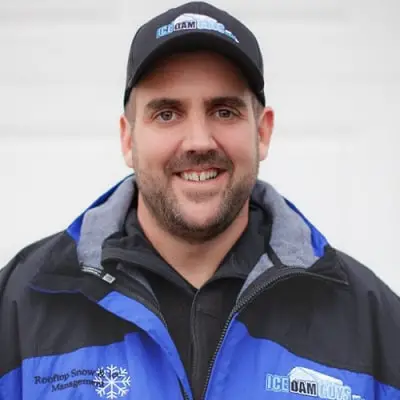Day in the life of
Broadway Performer – Kate Chapman

When I am performing on Broadway, my main responsibility is to stay well and able enough to do the show as rehearsed. Broadway shows are very physical jobs. We use our whole bodies to tell the stories, including our voices, which need to be very well-cared for.

Two Gentlemen of Verona – Shakespeare in the Park; role of Vissi D’Amore
A single-show day
A single-show day, with no afternoon rehearsal, is the lightest work day. On a day like that, I’ll allow myself to sleep until I wake up, and then I do my self-care routines, and I often do some writing. Then, at 6pm, I leave for the theatre, for our “half-hour call”. I walk to the ferry, commute into Manhattan via water, and walk to the theatre from the ferry terminal. All during these walks, I am thinking about the show, usually doing a bit of vocal warmups, and gently warming up my body by walking.
I usually like to arrive at the theatre right at “half hour” – which means that if a show has a curtain time of 8pm, my half-hour call is 7:30pm. During that half hour, I get into makeup and costume, visit with my castmates, and start to transition into the world of the show. Some performers arrive an hour before curtain (or more) in order to do their physical/vocal warmups inside the theatre. Sometimes, if there is a specialty makeup plot, a performer might be called before half hour. Also, if there are fight scenes, there is a “fight call” right at the top of half hour, which would then cause me to arrive at the theatre early to adjust for the time the fight call will take. (Fight call consists of the Fight Captain – the person in charge of making sure the fight choreography stays properly executed so nobody gets hurt – and those in the fight scene. The fight choreography is slowly executed and discussed, making sure that all the moves are done precisely and as safely as possible.)

Les Miserables – Broadway revival company (2006); role of Woman Worker (ensemble)
Half-hour call
During the half-hour call, there are announcements made by Stage Management, telling us who might be out of the show, and which understudy/swing was covering, and then how much time we have left before curtain. Half hour is called, then 15 minutes, 5 minutes, and Places. Once Places is called, my job is to get to the stage area as quickly as possible (if I’m in the first scene of the show), pick up any props I might be assigned to use, and take my position on the deck (stage). Then, when everyone in the production is in their places, the lights dim and the show begins.
Show begins!

Mary Poppins – Broadway company; role of Miss Lark
Once the show begins, it’s my job to make sure that I hit all my cues, say all my lines properly – as rehearsed – and to perform each scene as well and as consistently as I can. While I am in costume I’m not permitted to be outside the theatre unless it’s right outside the stage door, and then I have to be covered in a robe. Any eating and drinking backstage must be done while having a robe covering my costumes. A very large aspect of my job is to care for the costumes that I’m wearing. While there is a wardrobe department that does any necessary repairs and all the cleaning and ironing/steaming maintenance, while I’m wearing the costume, it’s my job to keep it in as pristine condition as possible. Broadway costumes sometimes cost thousands of dollars a piece to construct, and are done completely by hand. Some of them are true works of art, but all Broadway costumes need to be regarded in that way. Maintaining the “look” of a show is very important.
Which brings me to “weight clauses” – which have existed in almost every contract I’ve signed. These clauses usually state that the performer is responsible for maintaining a consistent physical look while employed with the production. Because costumes are so expensive, and many of them take months to make, being able to fit well into the costume, without straining the seams, is important. Also, I can’t decide to go out and get a tattoo in a visible place, for instance, unless it’s been cleared by the producer. How I look when I sign my contract is how I’m supposed to still look the day we close the show – and that includes losing weight, which makes more work for the wardrobe department, and – again – isn’t in the best service of the costumes. The less they are altered, the better.
Understudy rehearsal
On certain days of the week, I might be called for an understudy rehearsal, a brush-up rehearsal, or a “put-in” – which is a rehearsal where we run the show, in real time, with sound and lights, but in our street clothes – except for the person being put into the show, who performs with their entire costume and makeup plot. This is usually the only rehearsal a replacement cast member will have with all the show elements before being in front of an audience. There are lots of rehearsals without all the cast members or costumes, sound, and lights, but we usually only get one shot to put it all together – which is terrifying. (If you’re in a show from the beginning, there are many “tech rehearsals” where the performers are slowly introduced to sound, lights, stage elements, costumes, and – finally – the orchestra. A put-in is for someone who is entering the show after it’s already running.)

Grand Hotel – New York City Center; role of Madame Peepee
Two show days
Some days, there are two shows. On those days I arrive at the theatre during the day for half-hour call, do the first performance, and then there is “time to kill” before the second show. During this time I’ll eat, for sure. How much I can eat, and what types of foods I want to eat depend upon the show. If I have constrictive costumes or if I have a very physical show, I probably won’t want a heavy meal (which is most shows). Also, it’s important to have enough time to digest whatever it is, or I’ll feel sluggish during the 2nd performance. Depending upon the time of year and the demands of the show, I might either take a walk to Central Park or lie down for a nap in my dressing room between shows. (If I’m in the chorus, there isn’t usually much room for napping, so that can also be a consideration.)
So, between rehearsals, 8 shows/week, self-care regimens, dance classes, vocal coachings and auditioning for the next gig – which is a constant need, life is quickly consumed. Performing on Broadway is a full-time job, and then some.

Mary Poppins – Broadway company; role of Mrs. Corry
From the outside, it looks like being a Broadway Performer is a glamorous job but I’m sure there are both pros and cons. What are the pros and cons of the job?
Pros
- At the end of your workday, people applaud you. That’s pretty cool. The audience says, “thank you for coming to work,” and it’s lovely.
- Broadway is filled with fascinating people, and there is a lot of diversity of class, age, race, nationalities, and personal beliefs inside those theatres. Working in such a diverse environment is really valuable…and, that said, there is room to grow here.
- There’s nothing better than singing and dancing with a live orchestra backing you up! The professional musicians who play Broadway shows are exquisite artists. It’s such a pleasure to work with such talent and dedication to craft.
Cons
- Broadway shows are very difficult to get, and sometimes they don’t run very long once you get them. So, for instance, “Sweet Smell of Success”, which I did in 2002, was set to be the hit show of the season, which would mean I’d have work for a long time. But, then, we weren’t the hit show, afterall, and we closed in 4 months and I was unemployed again. I’d been working on the development of that show for 4 years by the time it opened on Broadway, and then the run was only 4 months. During the development of a show, performers are often paid only $100 for 29 hours of work, doing what’s called a “reading”. So, I’d been in need of some Broadway income to off-set the development period….and then it closed quickly, so that didn’t happen. Major disappointment is part of the job.
- My body is broken from head to toe in various ways that I can attribute to show injuries, which are common. Most shows end up with a “signature injury” that strikes several cast members. For example, when I did “Mary Poppins”, many of us ended up with what we called “Mary Neck” – a repetitive movement injury stemming from “Supercalifragilisticexpialidocious” choreography. I left that show in 2008, but I still remember it well on days when my Mary Neck acts up. Each of the long-running shows I’ve done has left little remembrances behind in my body that I most likely will always need to treat from time-to-time.
- A career on Broadway means a lot of hustle, perseverance, missed holidays, and family occasions. Even once you have a Broadway job, the hustle doesn’t end. There are dance classes to attend, in order to keep the whole body moving, and not purely stuck in repetitive movements all the time. There are auditions and vocal coachings to do. In today’s Broadway scene, a performer’s social media presence is also sometimes a factor in casting, or a requirement once in a show. So, that’s another newly added job. In between Broadway shows, one must have “survival jobs” and/or perform in regional gigs to keep up with health insurance needs. And, there’s the fact that there are many more performing jobs for those under the age of 50 than for those over that age. So, available opportunities to work diminish over time, which isn’t great in an industry that is already really difficult to find steady work within.






